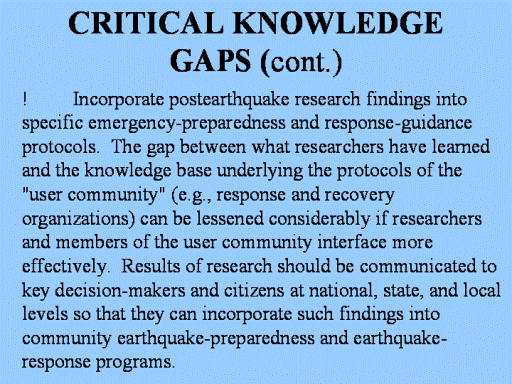| front |1 |2 |3 |4 |5 |6 |7 |8 |9 |10 |11 |12 |13 |14 |15 |16 |17 |18 |19 |20 |21 |22 |23 |24 |25 |26 |27 |28 |29 |30 |31 |32 |33 |34 |35 |36 |37 |38 |39 |40 |41 |42 |43 |44 |45 |46 |47 |48 |49 |50 |51 |52 |53 |54 |55 |56 |57 |58 |review |
 |
!
Develop valid earthquake casualty estimation models for
planning and response (e.g., predisaster models of the medical
impact of earthquakes for simulation of disaster impacts)
(129,130).
!
Determine whether and to what extent prior citizen safety
training changes people's behavior under stress. Few studies have
evaluated the extent to which people know about or follow earthquake
safety recommendations or the effectiveness of recommended
procedures (e.g., "duck and cover").
More research clearly needs to be done in these areas, and
more effective teaching and training tools need to be developed.
|